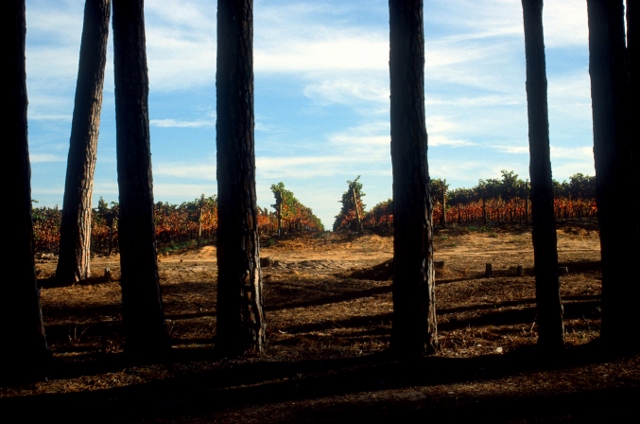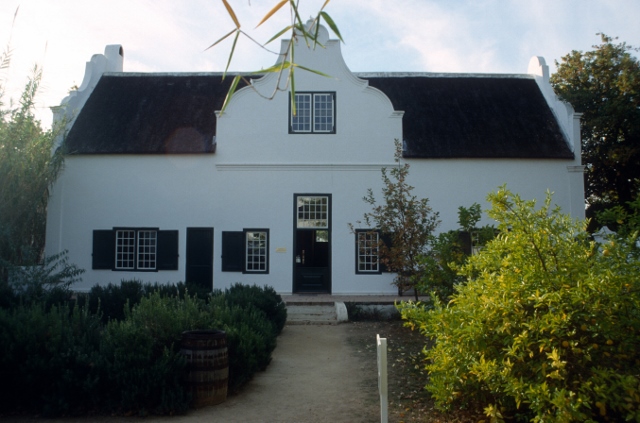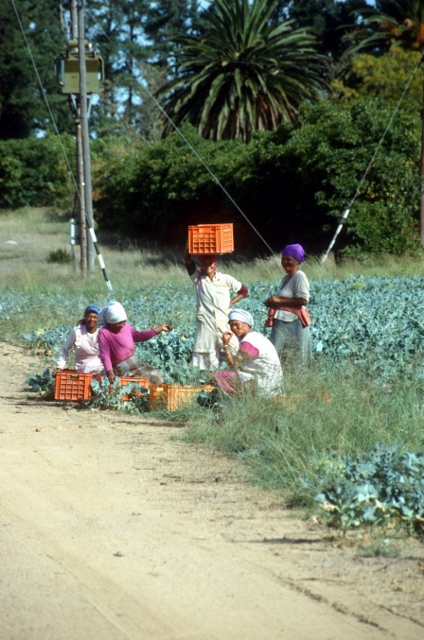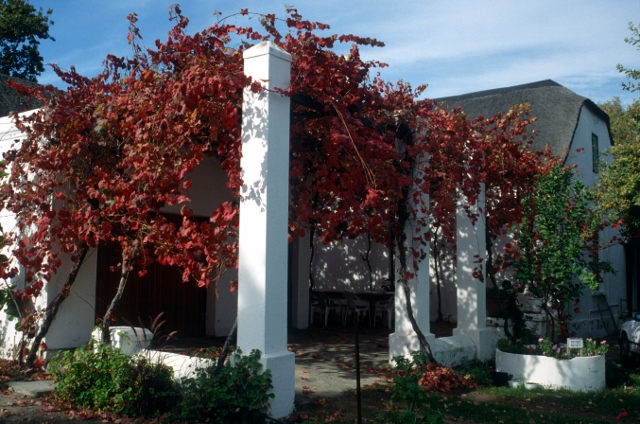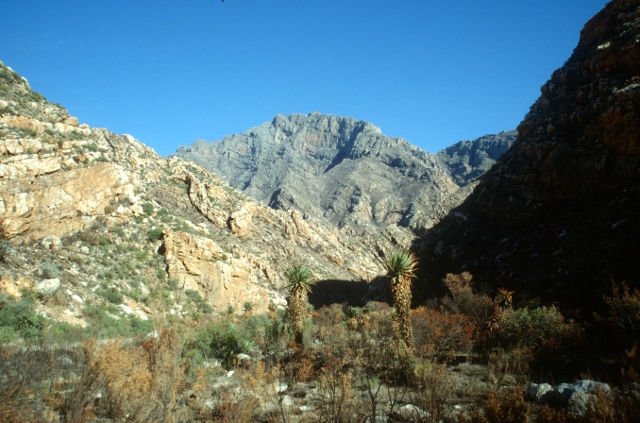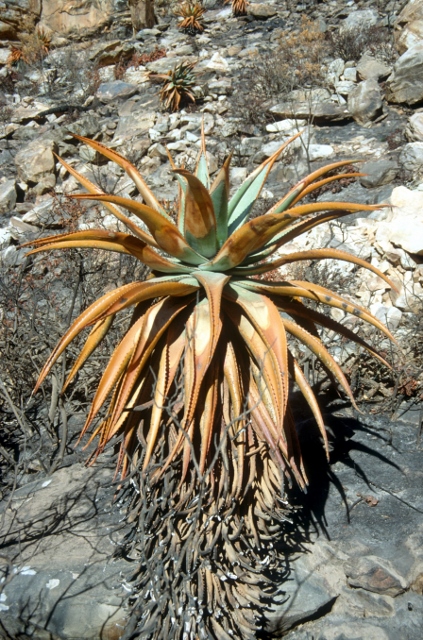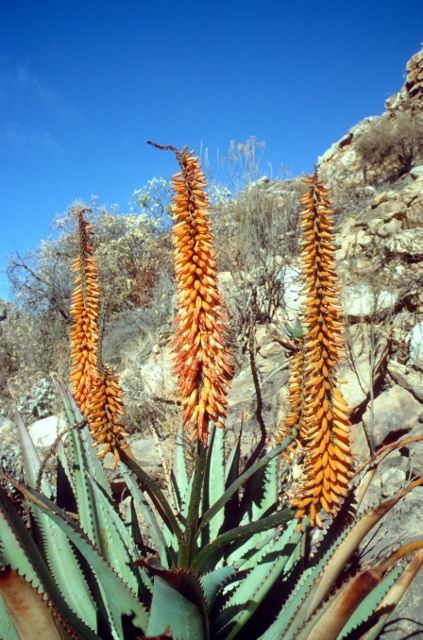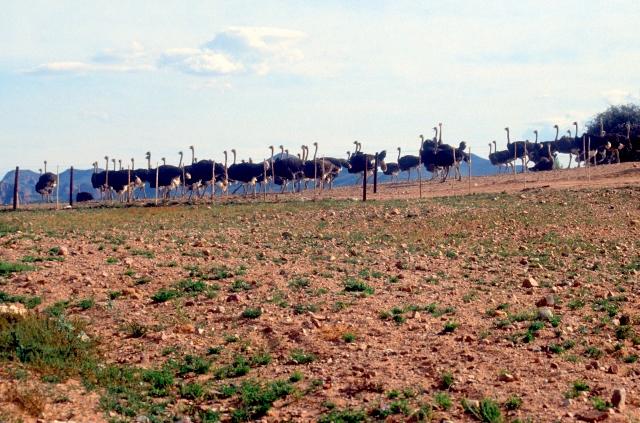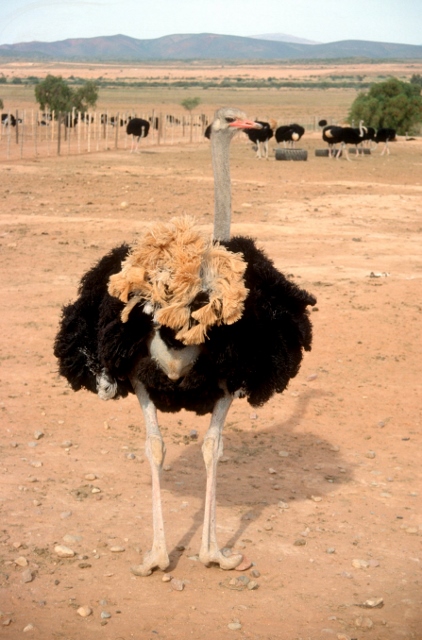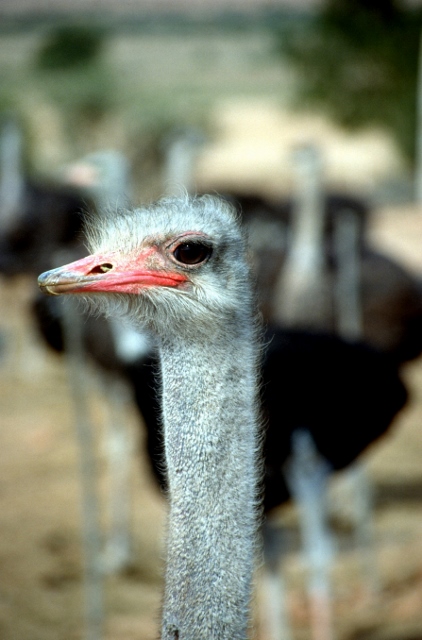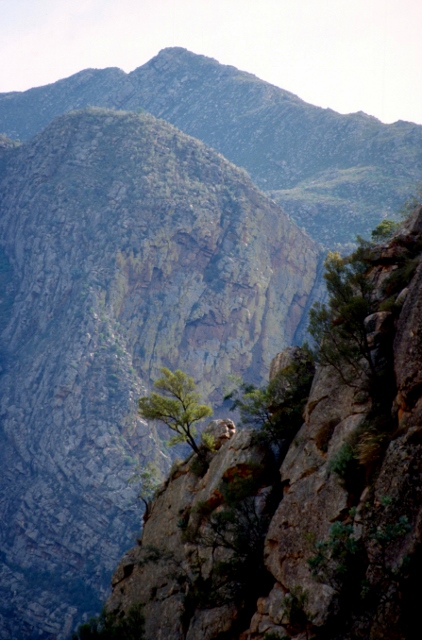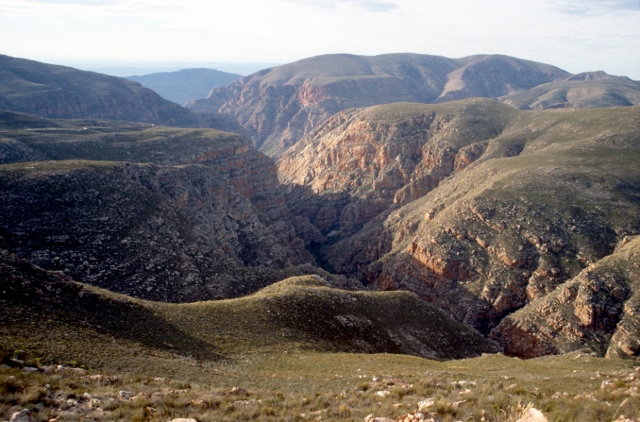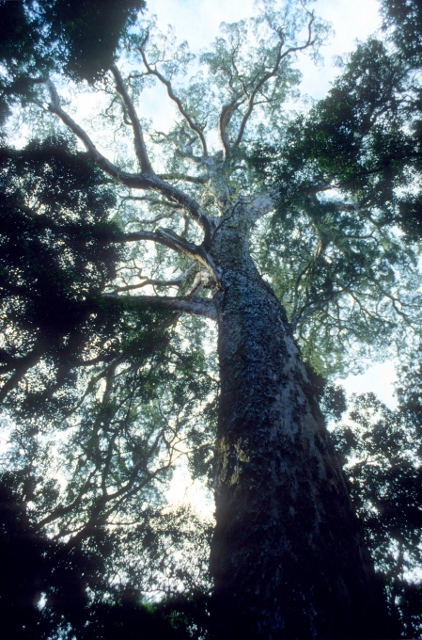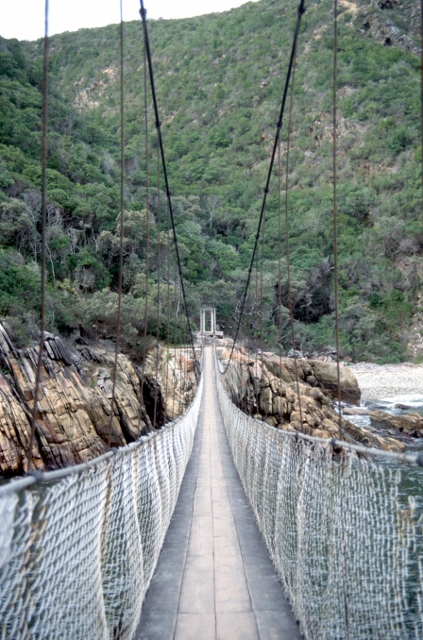The Garden Route is broadly defined as the area between Cape Town and Port Elizabeth, which is really the southernmost part of the African continent. It is not so much because there are a lot of gardens here, but because the coast is a lot greener, compared to the mountains further north – thanks to these mountains, that catch the moist air from the ocean and cause the occasional rain shower. Mediterranean, mostly. Except that I focussed mostly on the mountain landscape itself.
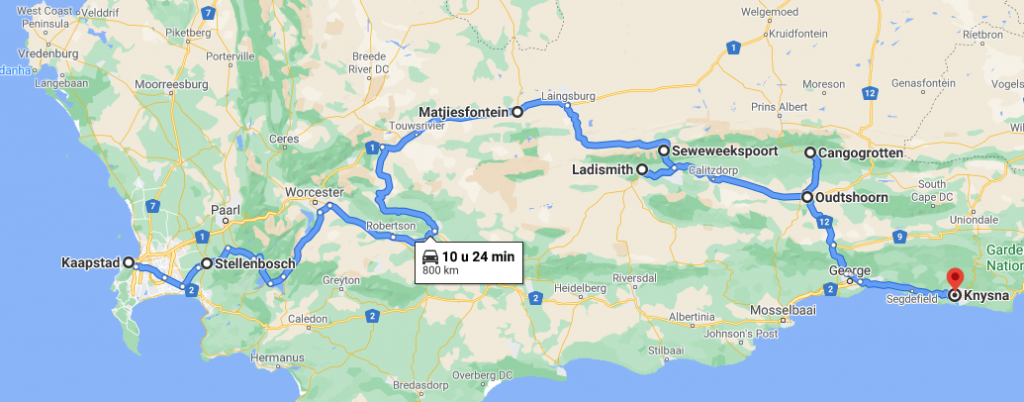
May 15th – Stellenbosch
The continuation of my South Africa travels, after four days of Cape Town, picked up speed only slowly. Stellenbosch is only about 50 km east, but I managed to take quite a few hours to arrive, with a stop in Gordon’s Bay along the coast, and then in a few wineries. This is wine country, with vine yards everywhere, attractively coloured by the autumn. Most grapes had already been harvested, but in places the picking was still underway – done by black people, of course, in this white bulwark of Apartheid.
Getting into Stellenbosch turned out to be a bit of a challenge, but after having driven around it three times, I finally found my way in. It is really a lovely village, with lots of old houses, in Cape Dutch, Georgian and Victorian style. Although I initially had planned to continue, I liked the place so much, that I decided to book into the local hotel, also situated in one of the historic buildings, and settle on the terrace with a bottle of wine.
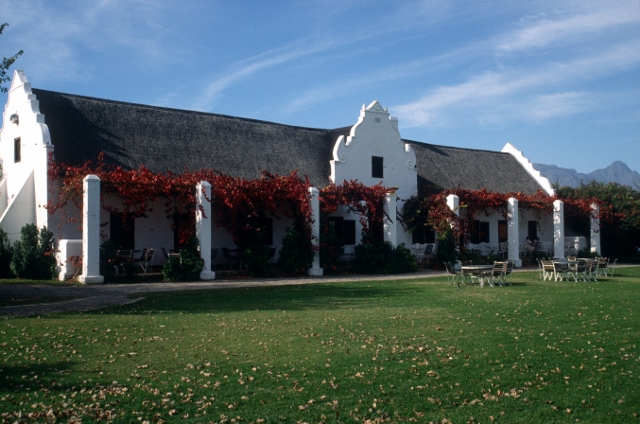

May 16th – Ladismith
A bit of a drive, today, from Stellenbosch through beautiful mountains and charming little villages. I had read about one of these, Matjiesfontein, being a national monument, entirely consisting of old buildings only. Which was true, except that when I got there, it turned out to have a hotel, a post office and maybe five or six houses only. Still, it was quite a remarkable experience, and having a drink at the local pub really felt like being back in London again. All so utterly British! And that in the middle of nowhere! (no pictures, I am afraid…)
Close to Ladismith I came upon the Seweweekspoort, where the road goes through a spectacular gorge. Towering walls at both sides, a geological museum exposing a range of dazzling structures in the rock layers. All manner of faults and folds, both textbook examples and sheer-impossible textbook contradictions, could be identified, in the absence of almost all vegetation. Except for the various aloes that grow here, happy with a little water only.
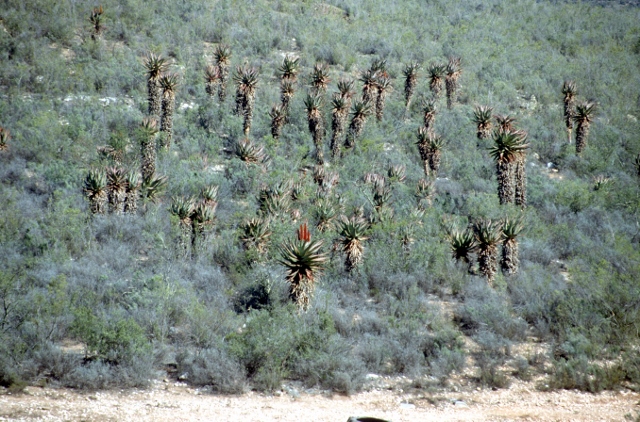
May 17th – Oudtshoorn
It seems it doesn’t matter where you are in this country, everywhere nature is beautiful. The road to the Cango Caves, just above Oudtshoorn, is once again stunning. Part through a small river valley, part across a steep mountain pass, closed for long traffic because of the many sharp hairpins in the road. Not everything is tarmac, this was a gravel road, pretty dusty at times – especially when you turn 180o in one of those hairpins, back into your own dust.
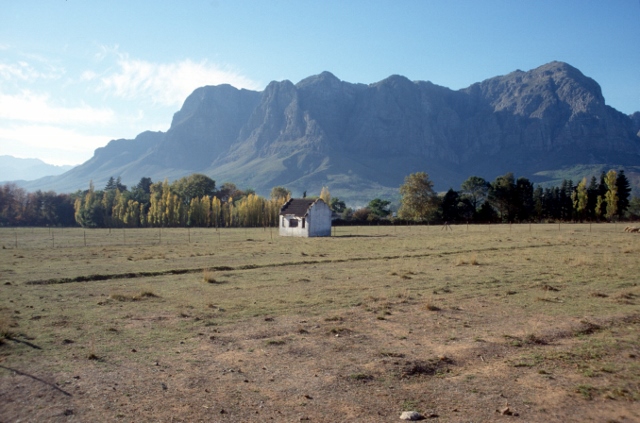
The Cango Caves are another major tourist attraction. The first 45 minutes lead through the main caves, large hollow rooms, with an assortment of attractive rock formations, an alternation of stalactites and stalagmites. Each of the structures had been given its own name vaguely resembling its shape, like Cleopatra’s Needle, the Organ Pipes or the Ostrich Leg. There was a cross, a bible, a face, and a lot more, all being accompanied by a coloured light show and some pompous music.
The second part of the tour was more interesting, or daring, if you like. First, a tedious walk, not upright for most of the way, through the smaller and low centre part of the cave system. And then the really scary part: they had created a trail made up of the narrowest of passages through which you had to scramble up, corridors only passable on fours, crawling on your stomach, and of cracks in the rock through which you had to glide down. The narrowest passage was only 27 cms! Obviously, the Sissys turned back, the Machos went on. For inexplicable reasons, given a tendency for claustrophobia, I had sided with the Machos, and even worse, I went in first – and no way back anymore, for most of the way two people cannot pass each other. I still get the shivers when I think back. Frightening!
Oudtshoorn is the centre of ostrich farming. Really everywhere people are tending ostriches, on small holdings and on large farms, sometimes with hundreds of them. They are funny animals, moving in herds: at one moment all of them mover from left to right along the fence, and then one decides to turn, and they all turn, to run back again, for no apparent reason.
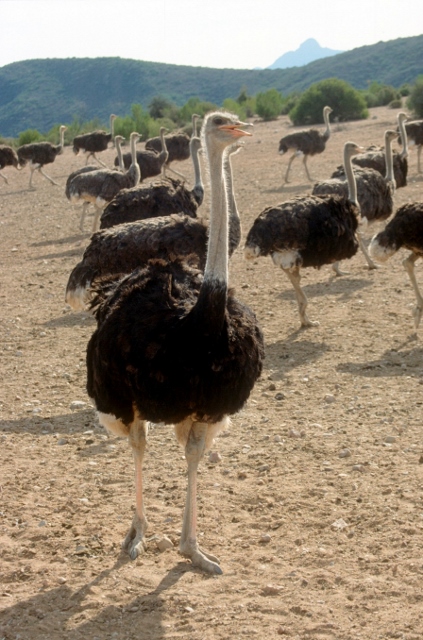
In the evening I felt compelled to taste ostrich meat, I had never eaten that before. I expected something like chicken, or turkey, white meat, but what I got was more like steak, nicely cooked medium rare, and very tasty.
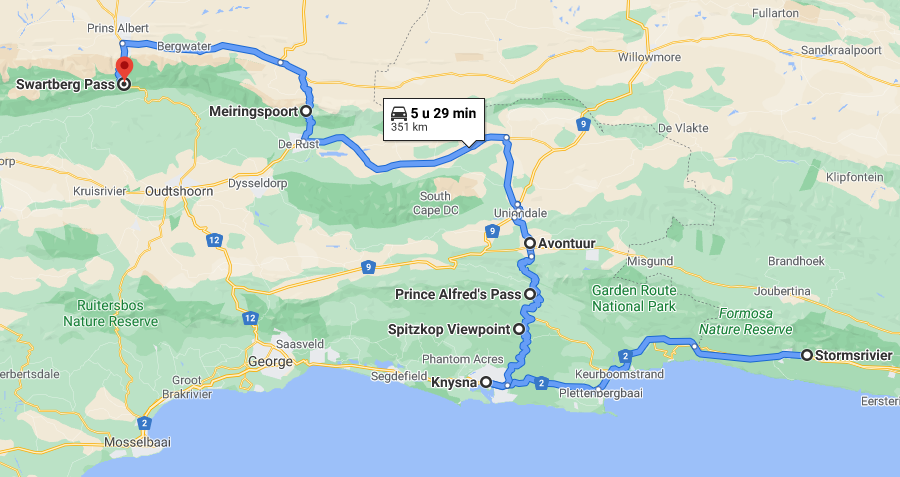
May 19th – Knysna
Although Knysna is a popular holiday place, it didn’t show. I walked from my hotel at one end of town to the ostrich meat restaurant at the other, and back, but the place was deserted in the evening, a Saturday night. Which suited me well.
I will have to adjust my plans, because I am progressing much slower than I had anticipated. Or maybe I just want to do too many things. I have already given up on the few days safari at the end of the trip, and I suppose that several of the rock painting sites I had intended to visit, will also have the be scrapped. But it is so beautiful here that I am not yet ready to move on.
Outside Knysna a road climbs up through the forests outside town into the Outeniqua Range, to the Prince Alfred Pass and to a place aptly called Avontuur (adventure, in English). On the way, a track leads to a viewing point near the summit of the Spitzkoppe, one of the mountains along the road. With, once again, splendid views, inland to further, and higher mountain ranges, whilst looking back you see Knysna, and the ocean beyond. The mountains here are greener, not as barren as earlier in the Karoo or the Cederberg.
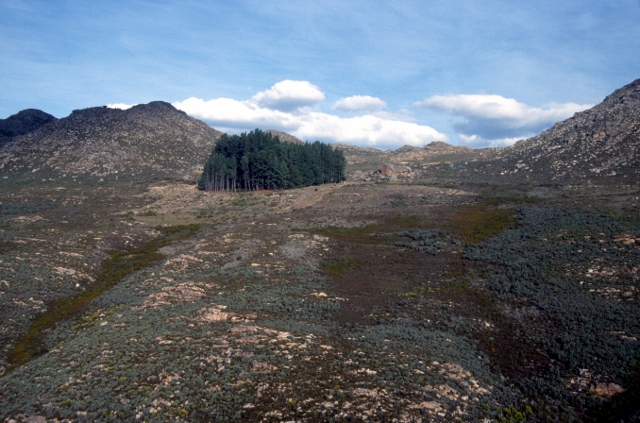
Beyond Avontuur I continued to the Meiringspoort, another steep gorge through the same mountains I crossed yesterday, and back across the Swartberg Pass, touted as ‘arguably the most spectacular in the country’. The road over the pass is over a hundred years old, built between 1881 and 1888, a solid piece of engineering. I won’t bore you again with how beautiful it is, here.
East of Knysna is the Tsitsikamma forest, which is a popular hiking area. When I decided to take the walk to the mouth of the Storms River, I was once again confronted with how developed everything here is. The ‘trail’ through the coastal forest has in fact been laid out with wooden planks, just in case you would get wet feet, and with wooden stairs and railings where it would get a little steep. Not the nature experience I was expecting, but then I was grateful for the real suspension bridge at the end of the trail, crossing the river.

next: the Homelands
